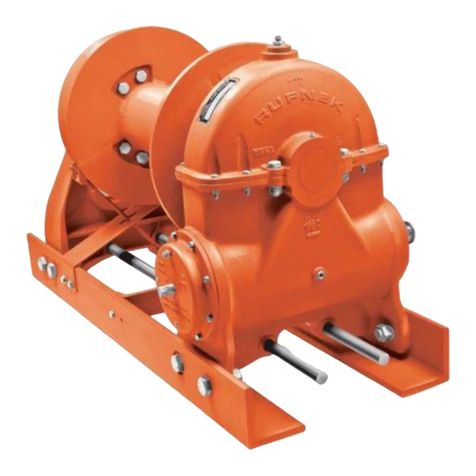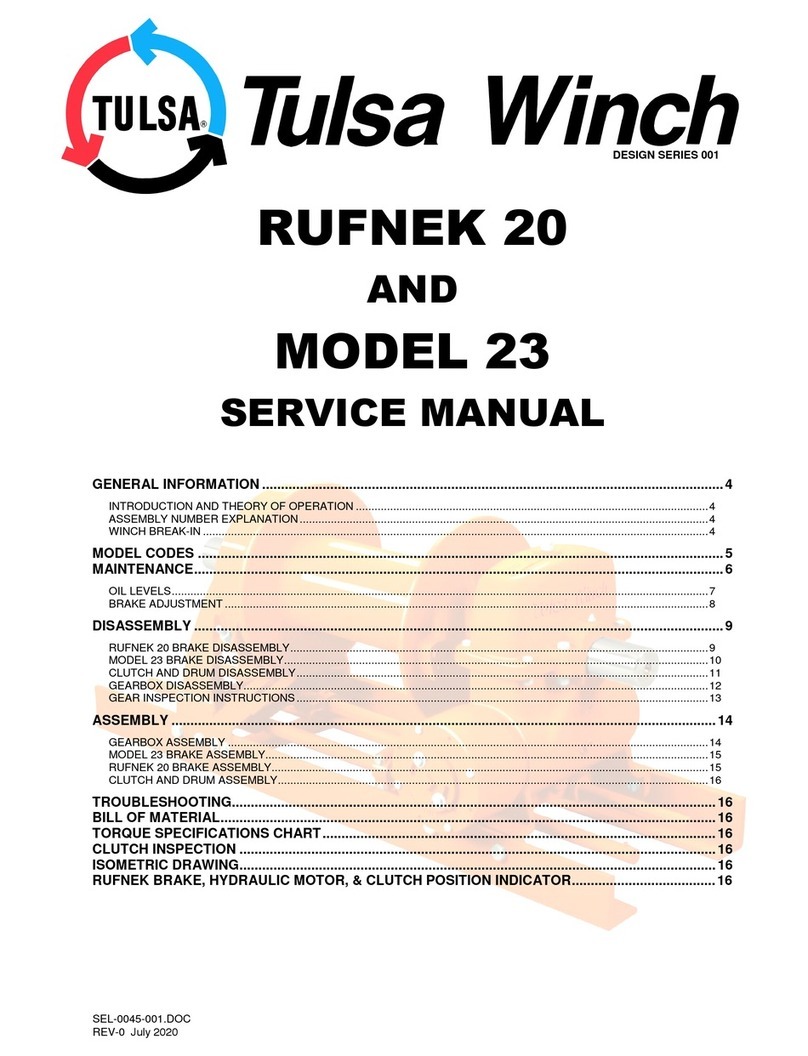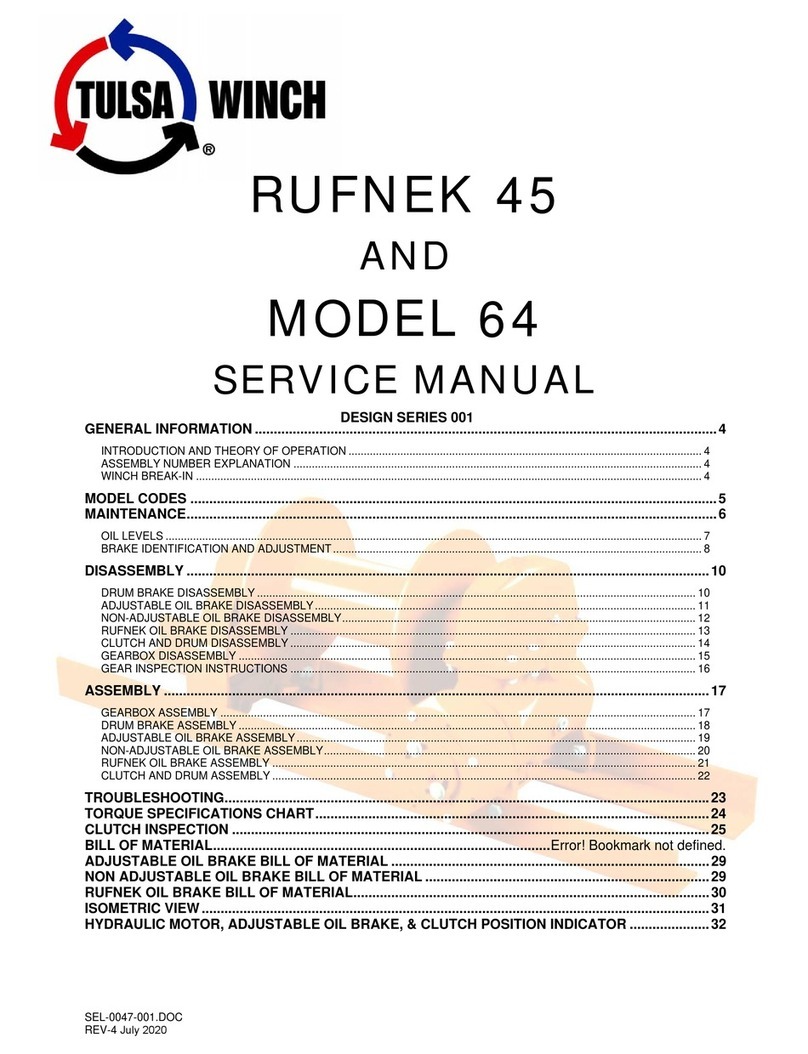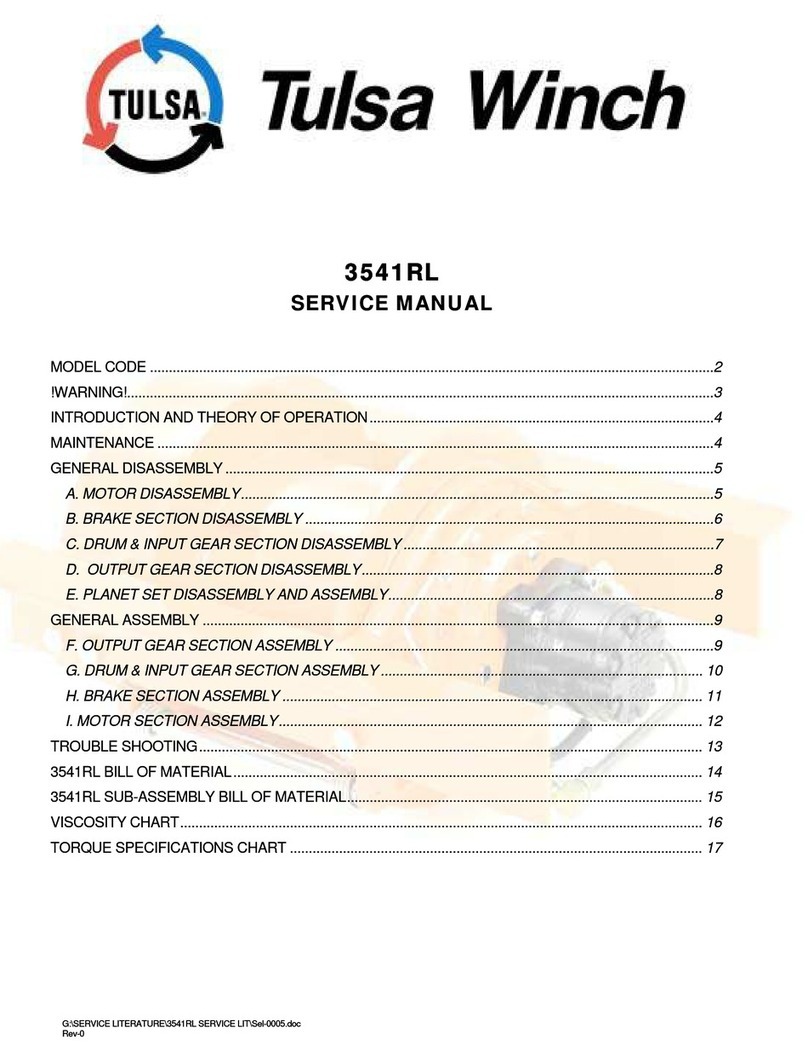
8
Sel-0010.docx
Rev2
CABLE INSTALLATION
To install the cable wedge anchor, first consult the wire
rope manufacturer for recommendations on how to
prepare the end of the wire rope. Thread the prepared end
of wire rope through the smaller side of the opening of the
cable drum wedge pocket. Pull through enough cable to
loop it back around and insert the end back into the wedge
pocket to about 3/4 depth of the pocket. Install the wedge
in the loop then pull the slack out of the loop with the
working line. The wedge will slip into the pocket and
secure the wire rope into the drum.
To install the u-bolt clamp style of anchor, first prepare the
end of the cable as recommended by the wire rope
manufacturer. Pass the wire rope through the u-bolt so
that the end extends approximately 2x the diameter of the
cable. Tighten the clamp evenly until the wire rope begins
to deform slightly under the u-bolt and the cable is held
securely.
When using the ferrule wedge anchor the cable must be 6
strand. First, make sure the cable end is cut clean and
square. Insert the cable through the ferrule and spread
the strands to insert the wedge halves over the core of the
wire rope. Position individual strands into proper grooves
around the wedge halves and tap the wedges until they
are flush with the strand ends. Slide the ferrule back over
the wedge and drive the wedge into the ferrule with a
hammer and short pipe which fits inside the strands and
over the core.
WARNING: CABLE ANCHORS ON TULSA WINCHES
ARE NOT DESIGNED TO HOLD THE RATED LOAD OF
THE WINCH. YOU MUST KEEP AT LEAST 5 WRAPS
OF CABLE ON THE DRUM TO INSURE THAT THE
CABLE DOES NOT COME LOOSE.









































